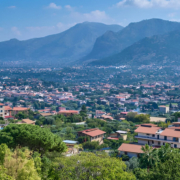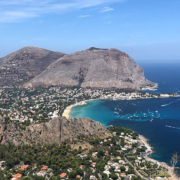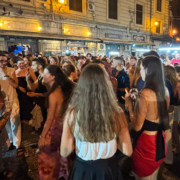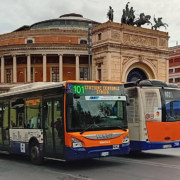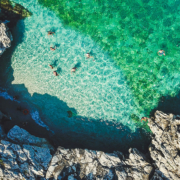What to see in Palermo? Places and Points of Interest
Palermo: The Pearl of Sicily
Palermo, the pearl of Sicily, is a city rich in history, art, and culture. Walking through its streets, it’s impossible not to be fascinated by the variety of architectural styles and the beauty of its monuments. If you’re planning a visit to Palermo, there are some must-see places you absolutely cannot miss. This article will guide you through the main tourist attractions in the city, giving you a complete look at what Palermo has to offer.
- 1. The Norman Palace and the Palatine Chapel
- 2. Palermo Cathedral
- 3. The Quattro Canti
- 4. The Teatro Massimo
- 5. Palermo’s Markets: Ballarò, Vucciria, and Il Capo
- 6. Martorana Church and San Cataldo
- 7. The “Antonio Salinas” Regional Archaeological Museum
- 8. The English Garden and Villa Giulia
- 9. The Capuchin Catacombs
- 10. Monte Pellegrino and the Sanctuary of Santa Rosalia
- 11. Mondello Beach
- 12. The Qanat of Palermo: A Journey Underground
- 13. Piazza Pretoria: The “Square of Shame”
- 14. The Zisa Castle: A Masterpiece of Arab-Norman Architecture
- 15. The Teatro Politeama Garibaldi
- 16. The Cala: Palermo’s Old Harbor
1. The Norman Palace and the Palatine Chapel
The Norman Palace, or Royal Palace, is one of Palermo’s most iconic landmarks. Built in the 9th century by Arab rulers and later expanded by the Normans, the palace is now home to the Sicilian Regional Assembly. Inside the palace is the magnificent Palatine Chapel, a masterpiece of Byzantine art famous for its golden mosaics, intricately carved wooden ceiling, and polychrome marble floors. This church, dedicated to Saints Peter and Paul, is considered one of the most beautiful in the world for its harmony and richness of decoration.
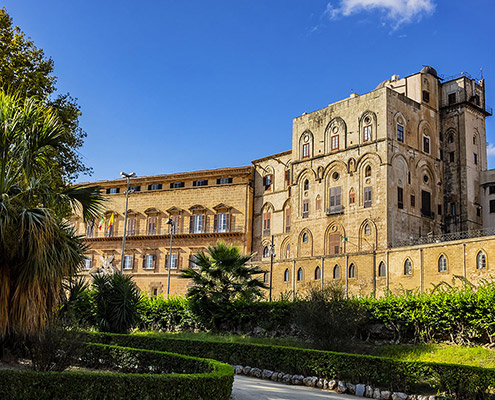
2. Palermo Cathedral
The Palermo Cathedral is another symbol of the city. Originally built in 1185, the cathedral has undergone numerous renovations over the centuries, giving it a mix of architectural styles, including Gothic, Baroque, and Neoclassical. Inside, you can find the tombs of the Norman kings, including those of Roger II and Frederick II of Swabia. Don’t miss the opportunity to climb the cathedral’s rooftops for breathtaking panoramic views of Palermo.
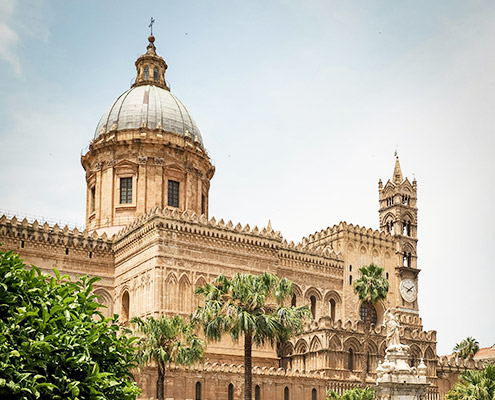
3. The Quattro Canti
Located in the heart of Palermo, the Quattro Canti, or Piazza Vigliena, is a monumental intersection marking the meeting point of the city’s four ancient districts. Each corner of the square is adorned with fountains and statues representing the four seasons, Spanish kings, and the patron saints of Palermo.
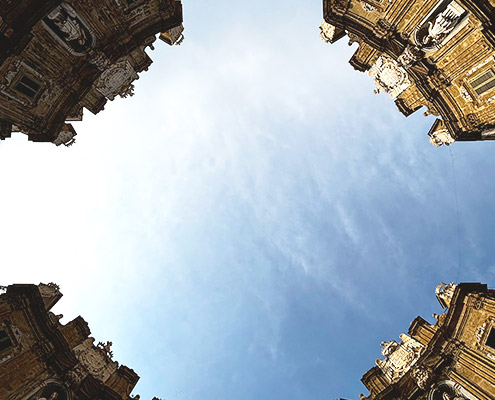
4. The Teatro Massimo
The Teatro Massimo Vittorio Emanuele is the largest opera house in Italy and one of the largest in Europe. Inaugurated in 1897, it is a neoclassical architectural masterpiece and one of Palermo’s cultural symbols. The theater is famous not only for its size but also for its perfect acoustics. In addition to attending opera and ballet performances, you can take guided tours that will bring you behind the scenes and up to the theater’s panoramic terraces.
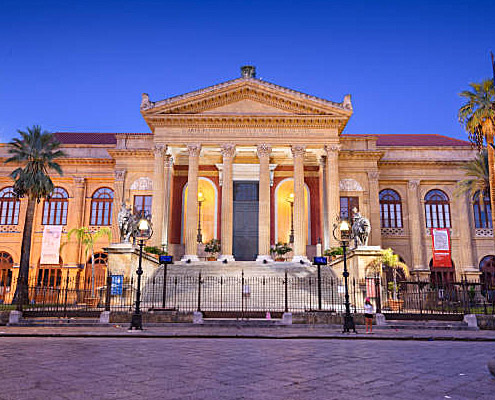
5. Palermo’s Markets: Ballarò, Vucciria, and Il Capo
Palermo’s markets are a must-see for anyone wanting to immerse themselves in the city’s true atmosphere. The Ballarò Market is the oldest and most authentic of Palermo’s markets. Here you can find a wide range of fresh products, from fish to fruit, as well as spices and typical Sicilian products. It’s also a great place to sample Palermo’s street food, such as pane con la milza, arancine, and sfincione. Be sure to visit it in the morning for the best experience.
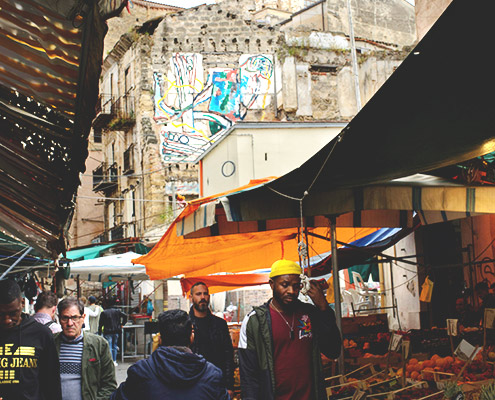
Ballarò Market, Palermo
The Vucciria Market, once Palermo’s main market, is now more of a square with two faces: during the day, you’ll still find some markets, along with street food and restaurants, while at night it turns into a hub of pubs and music until late. It’s a somewhat controversial spot, as not everyone appreciates the nighttime buzz (there are quieter places nearby, like Piazza Sant’Anna). Fun fact: the name Vucciria comes from the French “boucherie,” meaning “butcher shop,” dating back to the Angevin domination in Sicily in the 13th century. This area was once filled with butcher shops and meat vendors. In Sicilian dialect, “vucciria” has come to mean “confusion” or “noise.”
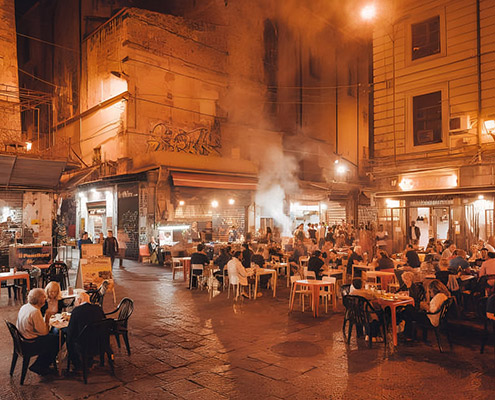
The Capo Market is located in the heart of the historic center, near the Teatro Massimo. It is famous for its lively atmosphere and variety of products, from spices to seafood, from meat to cheeses, and even Sicilian sweets. Il Capo is also the perfect place to try Palermo’s street food, such as pane e panelle, arancine, and stigghiole.
6. Martorana Church and San Cataldo
The Martorana Church, or Santa Maria dell’Ammiraglio, is one of the most beautiful churches in Palermo. Built in the 12th century, it is famous for its Byzantine mosaics that decorate the church’s interior. Next to the Martorana is the Church of San Cataldo, a striking example of Norman architecture with its characteristic red domes.
![]()
7. The “Antonio Salinas” Regional Archaeological Museum
The “Antonio Salinas” Regional Archaeological Museum is one of the most important museums in Sicily. Located in the historic center of Palermo, the museum houses a vast collection of archaeological artifacts that tell the story of Sicily, from prehistoric times to the Greco-Roman period. Among the museum’s most important pieces are the metopes from the Temple of Selinunte and the statue of the Youth of Mozia.
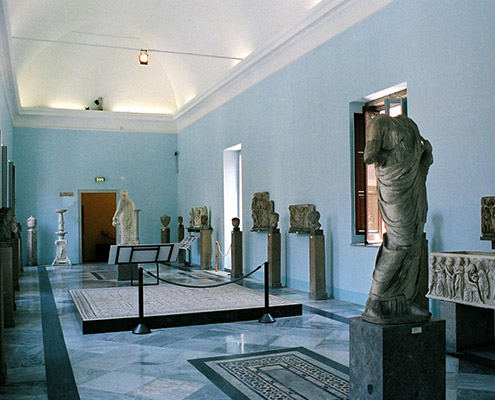
8. The English Garden and Villa Giulia
For a break in nature, Palermo offers two historic parks of great beauty. The English Garden, designed in the 19th century, is an English-style park with winding paths, ponds, and sculptures, perfect for a relaxing stroll.
Villa Giulia, on the other hand, is a splendid Italian-style garden, considered one of the most beautiful in Europe in the 18th century. With its tree-lined avenues, fountains, and statues, Villa Giulia is a peaceful oasis in the heart of the city.
9. The Capuchin Catacombs
A unique and perhaps slightly macabre, but certainly fascinating, experience is a visit to the Capuchin Catacombs. Located beneath the Capuchin convent, this site houses the mummified remains of around 8,000 people, including monks, nobles, and citizens of Palermo. The catacombs are an incredible testament to the practice of mummification and offer a glimpse into Palermo’s past society.
10. Monte Pellegrino and the Sanctuary of Santa Rosalia
For breathtaking panoramic views, hike up Monte Pellegrino, the mountain overlooking Palermo. At the top, you’ll find the Sanctuary of Santa Rosalia, dedicated to the city’s patron saint. The sanctuary is a beloved pilgrimage site for Palermitans, and the view of the city and the sea from above is simply spectacular.
There are also several trails through the woods covering the mountain, offering incredible panoramic views. If you’re a trekking enthusiast, make sure to explore the mountain. Other nearby nature trails are also worth checking out!

11. Mondello Beach
To end your tour of Palermo, you can’t miss a visit to Mondello Beach, one of the most beautiful beaches in Sicily. With its crystal-clear waters and white sand, Mondello is the perfect place to relax and enjoy the sea after exploring the city’s wonders.
Unfortunately, during the summer months, it can get quite crowded, but there are other nearby beach spots worth exploring, like the waters of Addaura or the Capo Gallo nature reserve. Check out our article for more information.
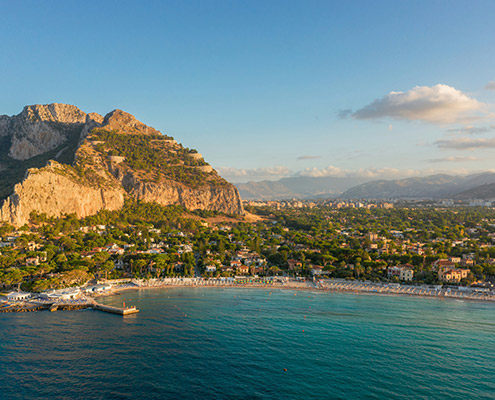
12. The Qanat of Palermo: A Journey Underground
Among Palermo’s hidden treasures are the Qanat, an intricate system of underground channels built by the Arabs between the 9th and 11th centuries. These channels were used to bring spring water from the mountains to the city, providing a constant and secure water supply. The qanat of Palermo are an extraordinary testament to Arab hydraulic engineering, still visible beneath the city today. You can visit some of these ancient aqueducts on guided tours, offering a unique glimpse into the city’s fascinating underground world.
13. Piazza Pretoria: The “Square of Shame”
Piazza Pretoria is one of Palermo’s most striking spots, famous for its magnificent Renaissance fountain, created in 1554 by Florentine sculptor Francesco Camilliani. The fountain is decorated with statues of mythological deities, animals, and allegorical figures, making it a masterpiece of great artistic value. However, Piazza Pretoria is also known as the “Square of Shame”, a nickname coined in the 16th century by locals scandalized by the statues’ nudity, especially since the square is located in front of the Monastery of Santa Caterina. Today, Piazza Pretoria is one of Palermo’s landmarks, representing the contrast between artistic beauty and the strict moral codes of the past.

14. The Zisa Castle: A Masterpiece of Arab-Norman Architecture
The Zisa Castle is another example of Arab-Norman architecture, recognized by UNESCO as a World Heritage Site. Built in the 12th century as a summer residence for the Norman kings, the castle takes its name from the Arabic word “al-Aziz,” meaning “splendid.” The Zisa Castle is renowned for its natural ventilation system and its interior decorations, which reflect the influence of Arab culture. Inside, the Museum of Islamic Art displays a collection of objects and artifacts illustrating the ties between Sicily and the Islamic world. Visiting the Zisa is like stepping back in time, to an era of extraordinary cultural and artistic blending.
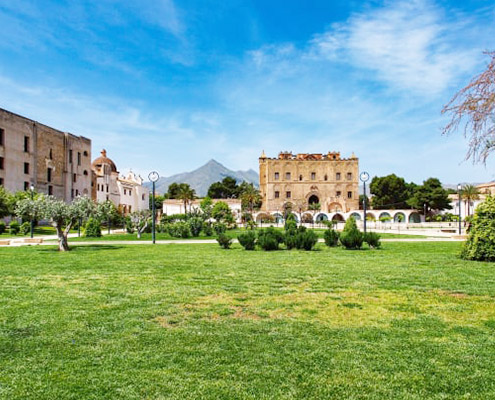
15. The Teatro Politeama Garibaldi
The Teatro Politeama Garibaldi is another gem of Palermo’s architecture, located in the city center at Piazza Ruggero Settimo. Inaugurated in 1874, the theater is a perfect example of neoclassical style, with a majestic façade crowned by an impressive bronze quadriga. The Politeama is now home to the Sicilian Symphony Orchestra and hosts a rich program of concerts and performances. Its central location and architecture make it a cultural and social landmark for both locals and visitors.
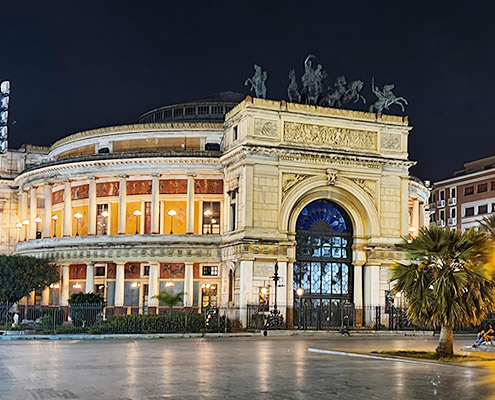
16. The Cala: Palermo’s Old Harbor
The Cala is Palermo’s ancient harbor, now transformed into a charming marina. The history of the Cala dates back to Phoenician times when the harbor was a major landing point for ships trading in the Mediterranean. Today, the Cala is a picturesque spot where you can take a stroll along the dock, admire the moored boats, and enjoy the view of the sea. Nearby, there are many restaurants and cafés where you can enjoy fresh seafood. The Cala is also a historic place, closely tied to Palermo’s maritime traditions and commercial roots.
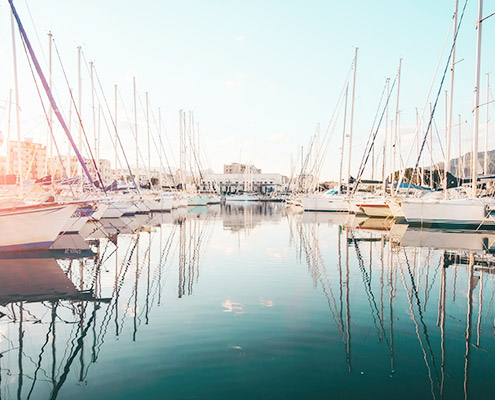
Conclusion
Palermo is a city that has so much to offer to anyone who decides to visit. From its majestic churches to its lively markets, from history-rich museums to lush parks, Palermo is a destination that will surprise and fascinate you. Plan your visit carefully and don’t miss any of the wonders this unique city has to offer.

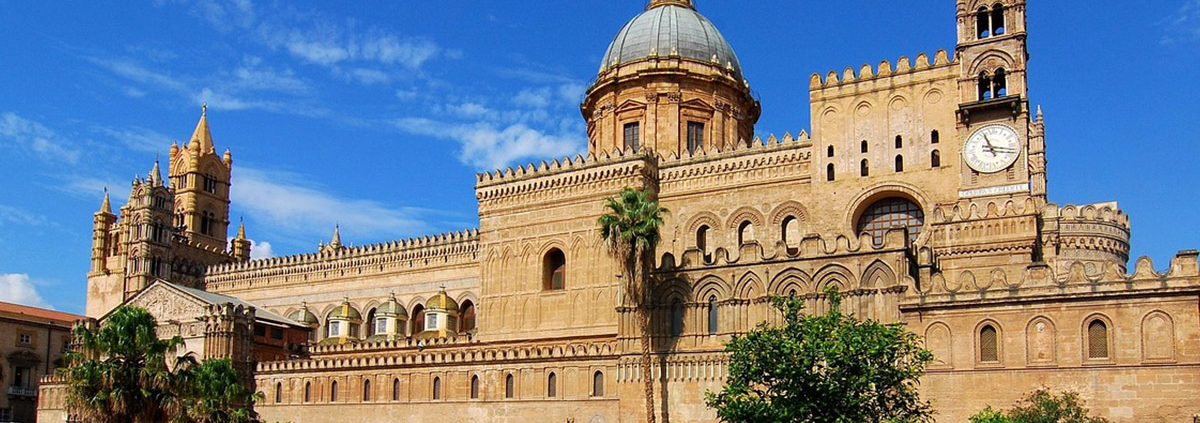
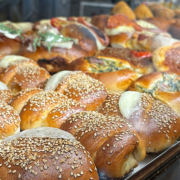 2024 visit-palermo.com
2024 visit-palermo.com